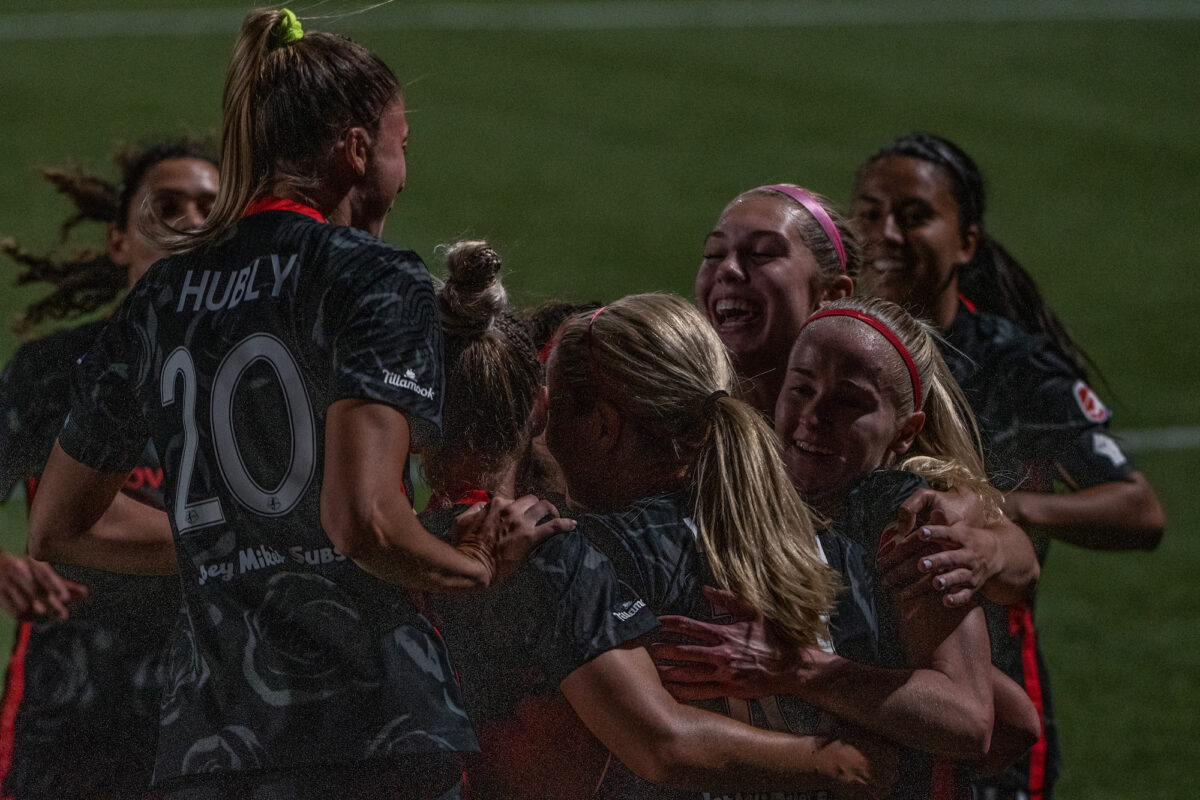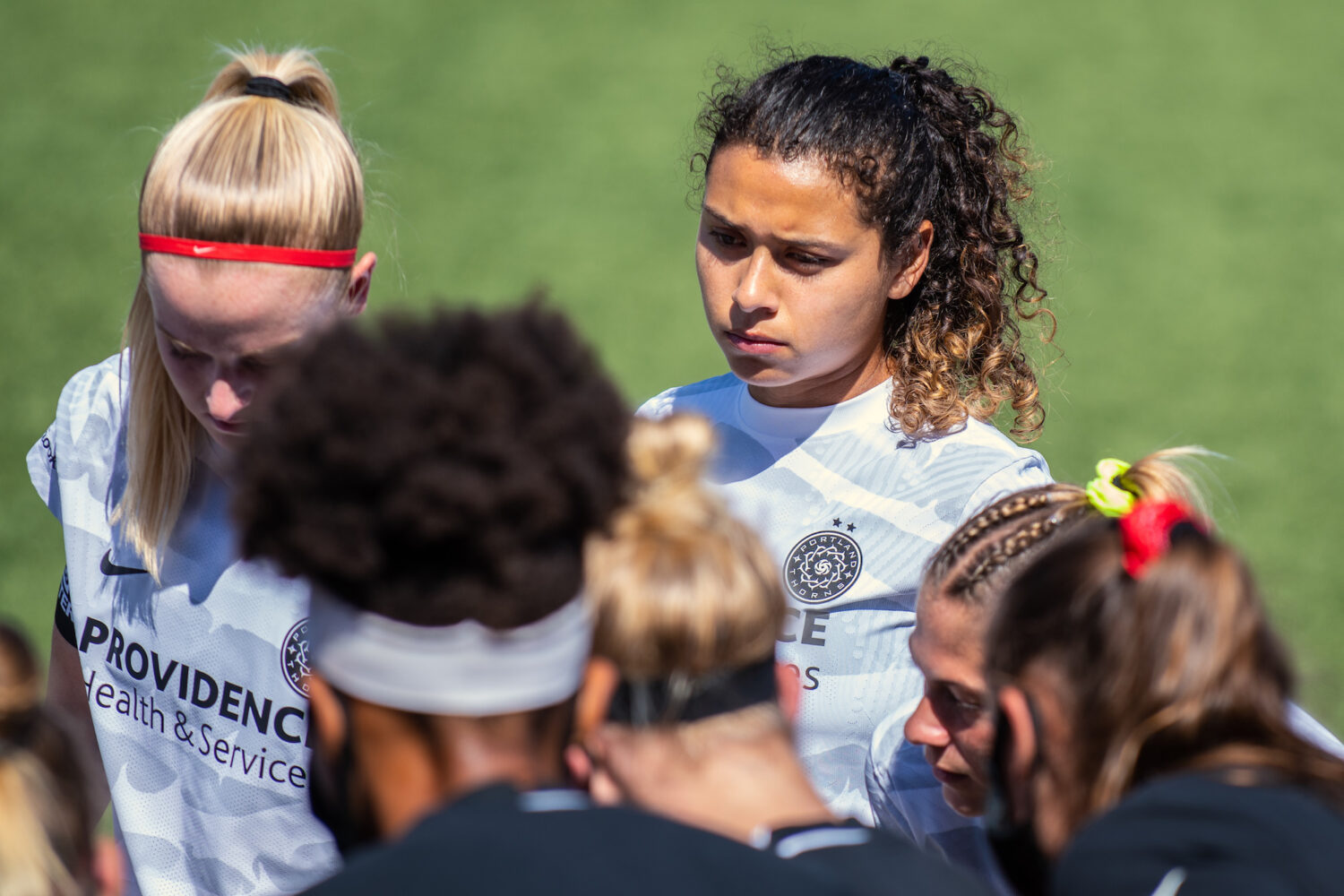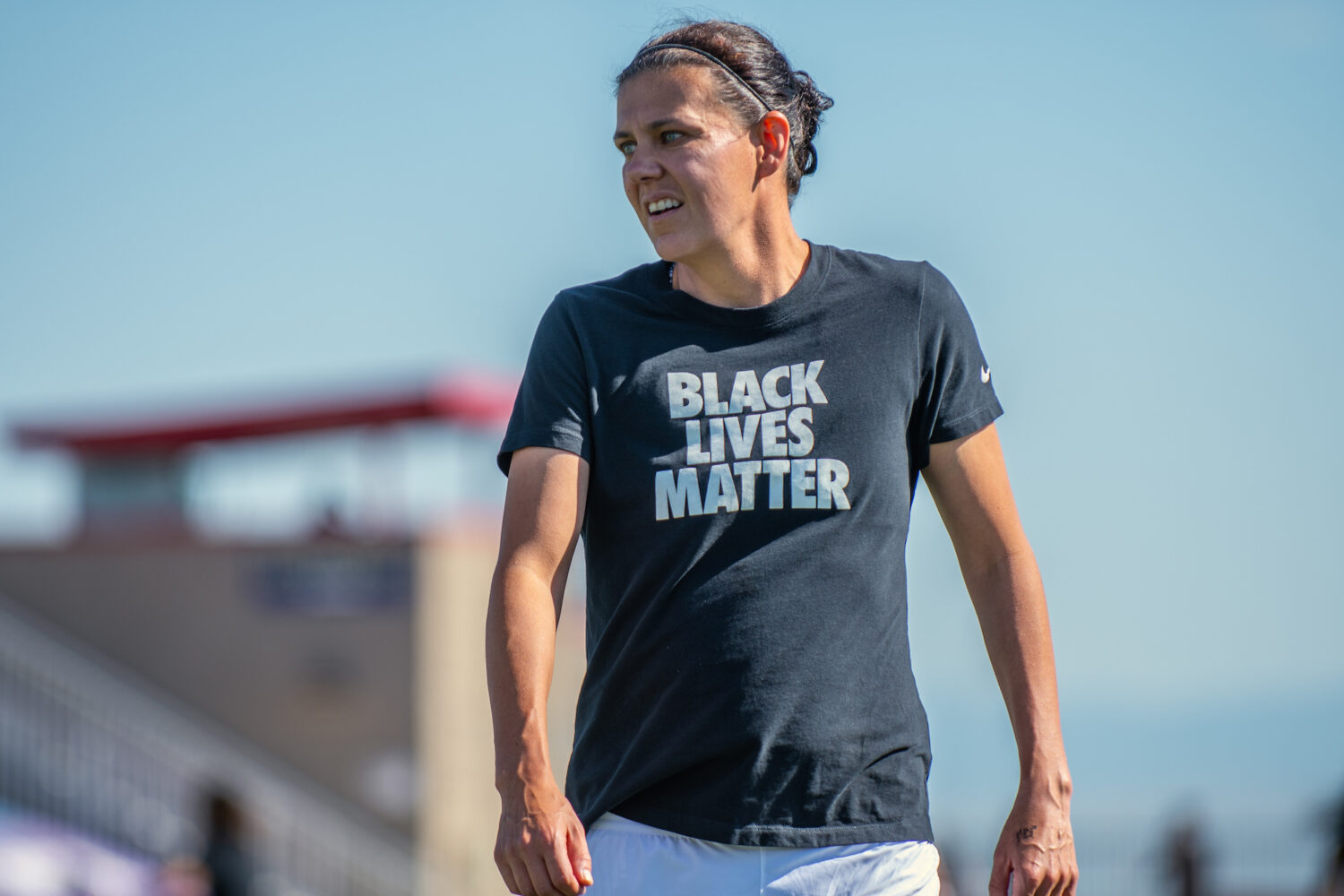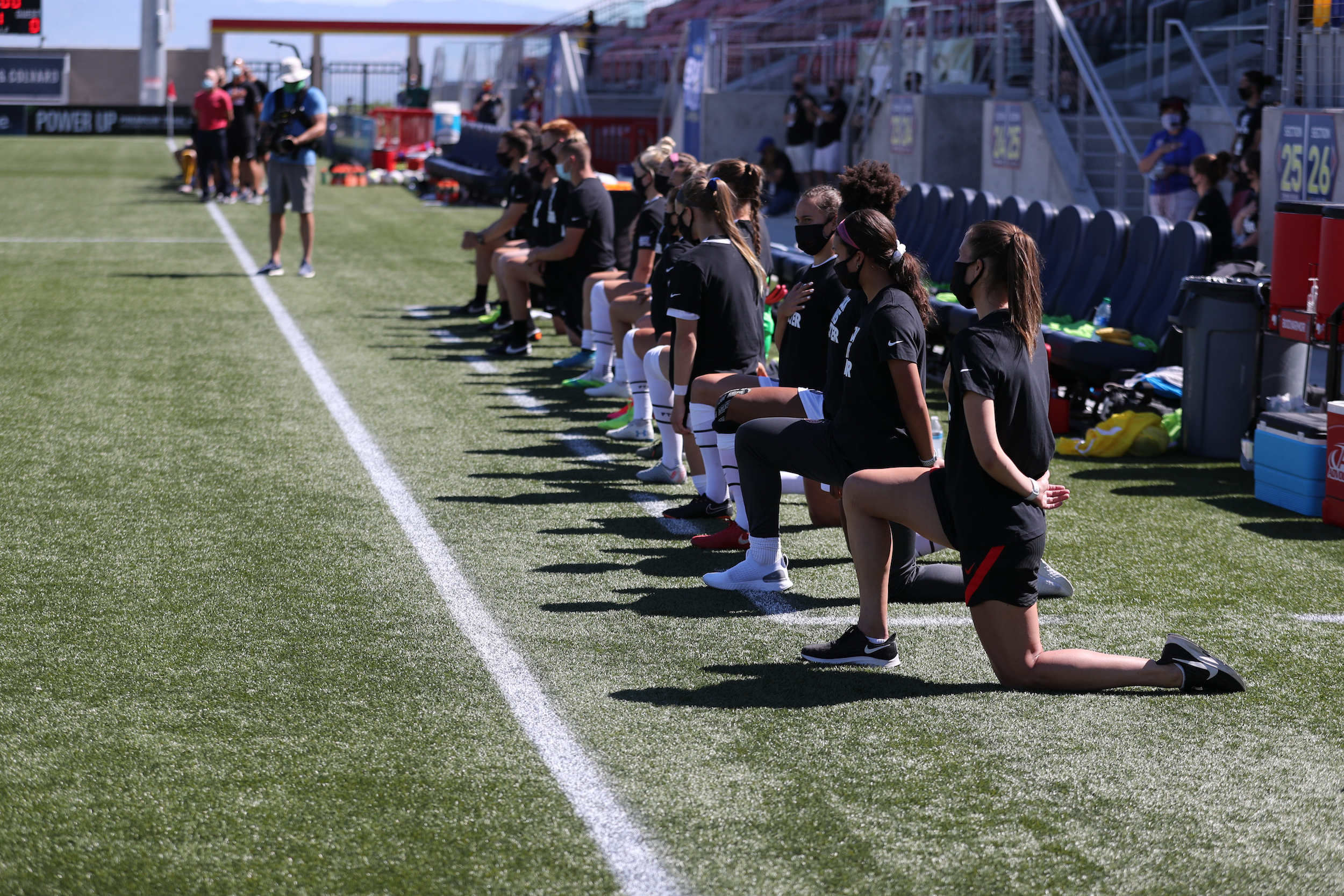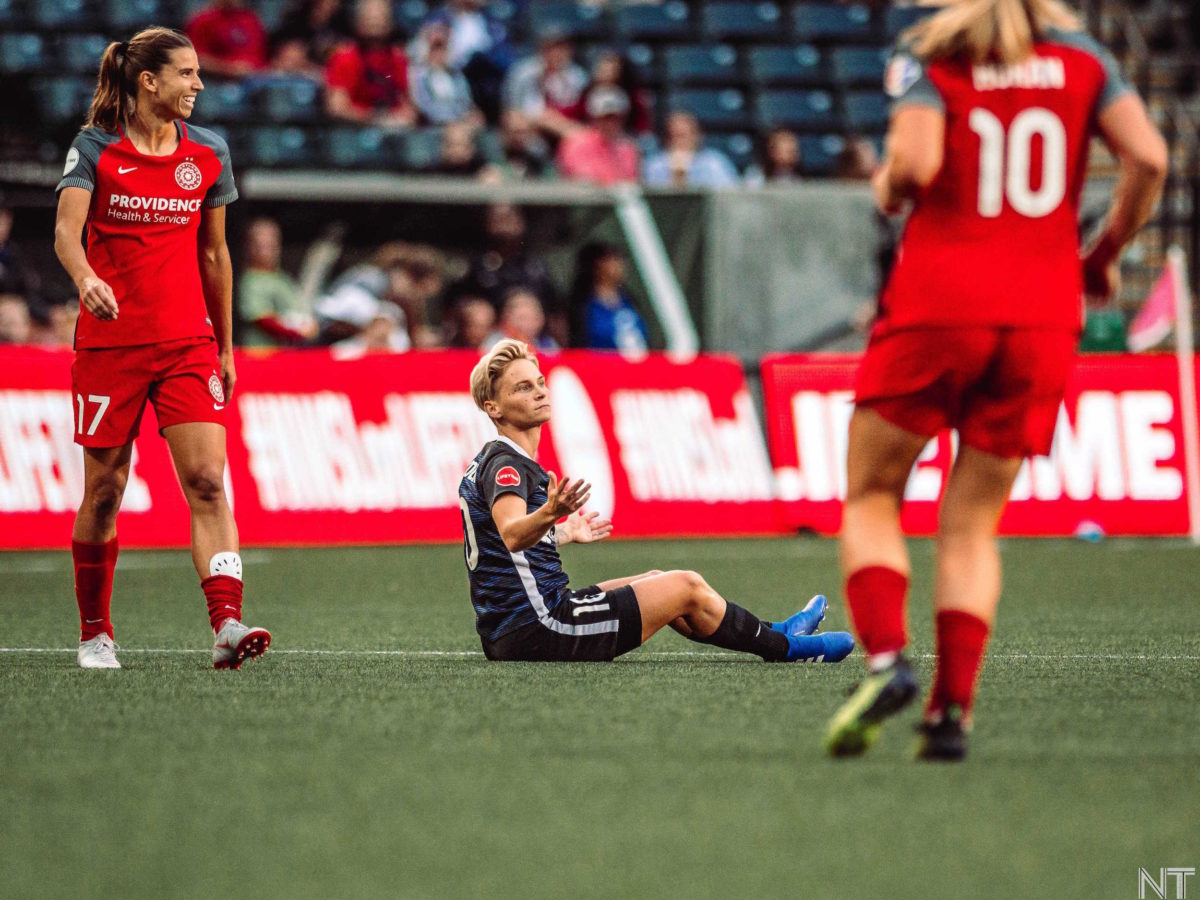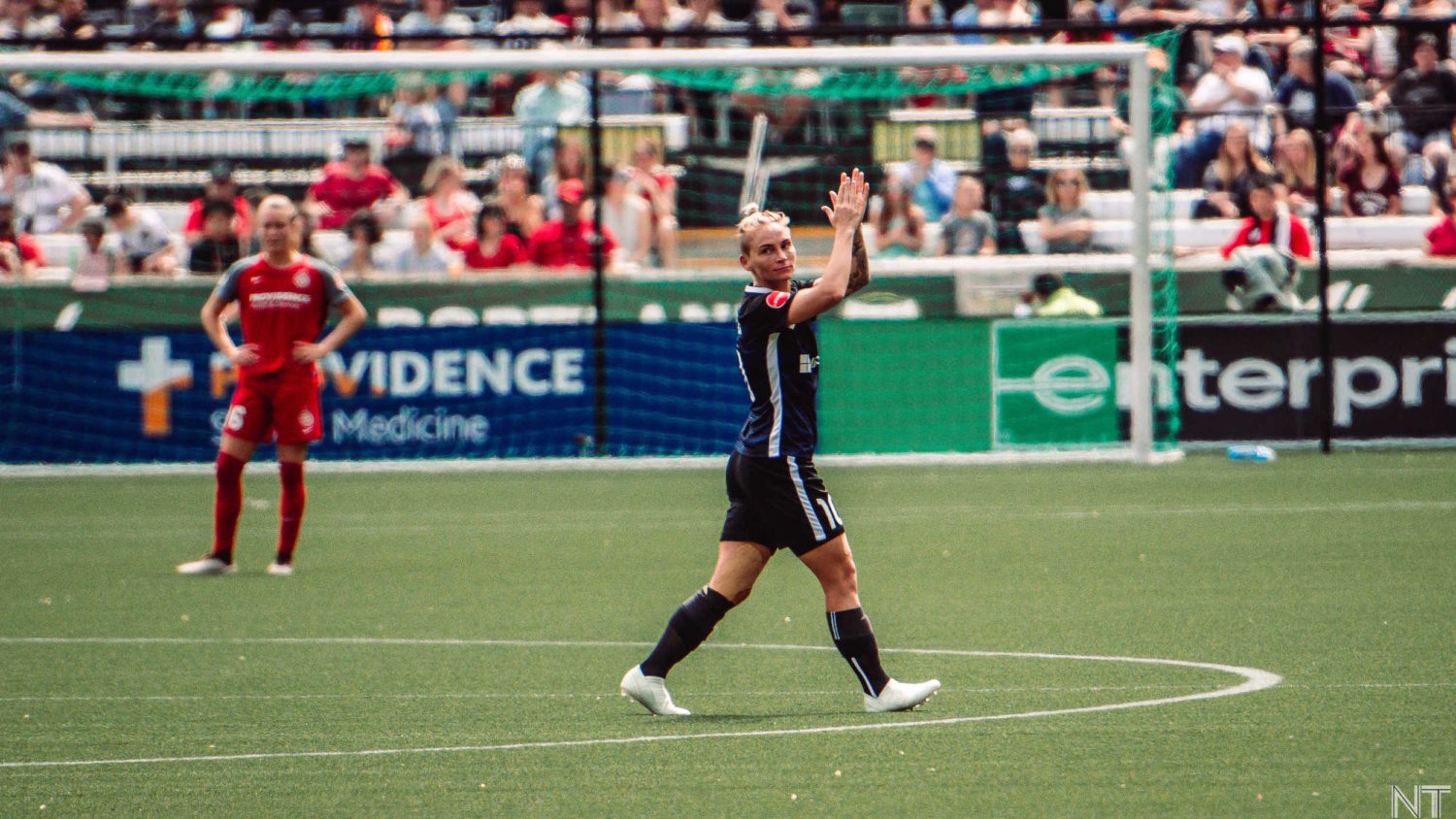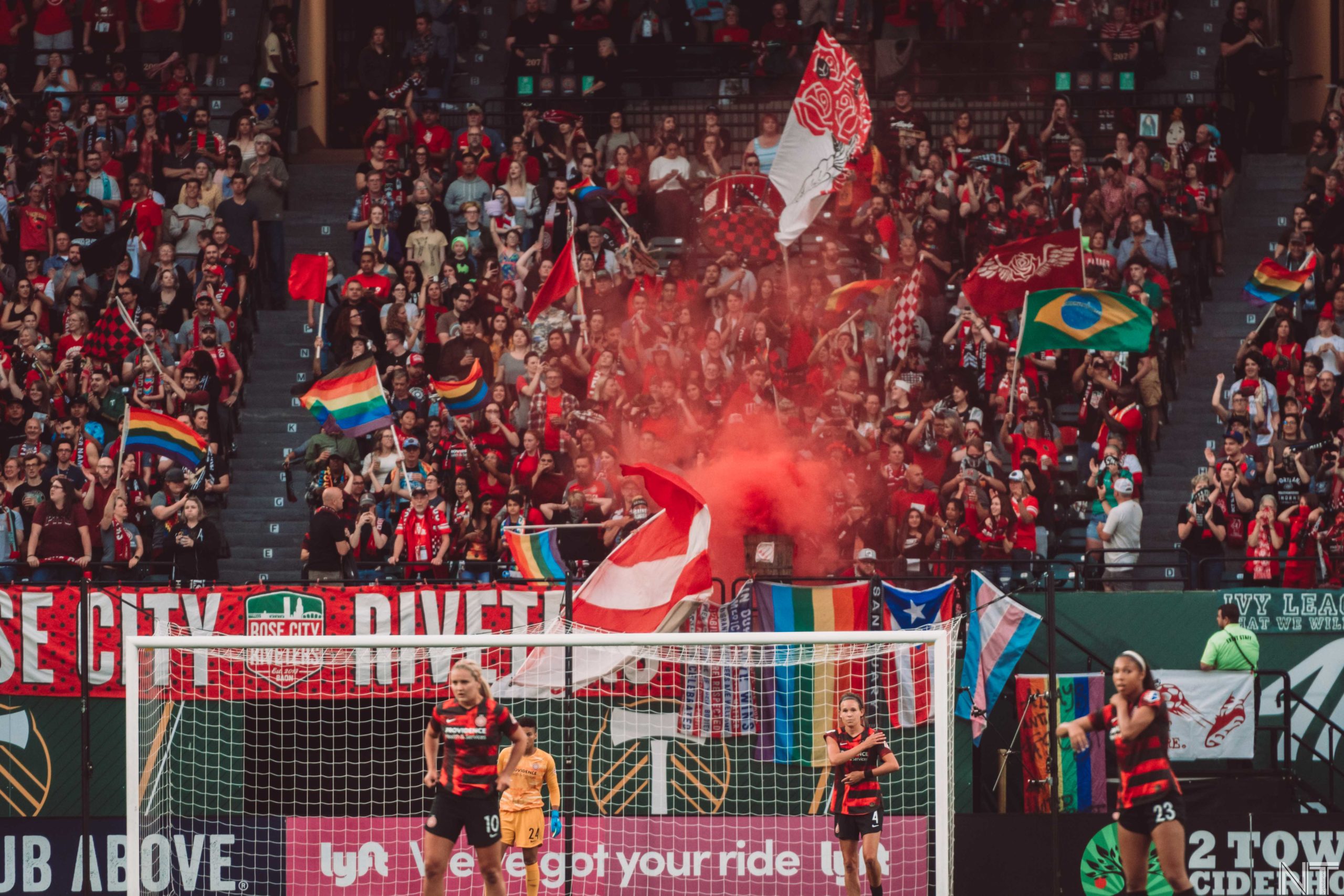The Thorns fell to the Chicago Red Stars 2–0 in their semifinal match at Providence Park on Sunday. Despite both teams taking a major last-minute scratch—Lindsey Horan sat out the match after suffering an injury the day before, and Chicago was without Mallory Pugh due to COVID-19 protocol—the Red Stars were able to execute their game plan, and the Thorns saw yet another match where they struggled to put the ball in the back of the net.
It was a rough game in that the Thorns kind of knew what Chicago was going to do in advance—if not the exact game plan, at least some of what they’d be coming up against—but they weren’t able to do enough to actually counteract that strategy.
“Our last match against Chicago, I thought they did a really good job of keeping us to one side,” Becky Sauerbrunn said in a press conference ahead of the semifinal game. “They kind of invited us to play to one side of the field and then really committed numbers and kept us over there, and it was difficult to switch the play. So for us, it’s identifying open players, it’s identifying the space that we can capitalize on and how we can get the ball there. I think if we can do that we can do that successfully and relatively risk-free, that will really help us in our build up.”
And Chicago did the same thing this time around.
“They’ve turned up into probably the hardest place to play against probably the hardest team to play,” Mark Parsons said of Chicago’s semifinal performance. “Very stingy, very disciplined, very organized performance, and they’ve got a great result.”
The Red Stars applied pressure early, cutting off spaces and staying touch-tight on Sophia Smith. For their part, the Thorns saw some success when they were able to break up a Chicago attack, switch the ball, and counter up the other side of the field, but the Red Stars were able to limit the moments where that happened from early on.
“Chicago did a really good job of keeping a lot of people in their box,” Emily Menges said after the game, “and it was really hard to get anything clean off.”
It’s not that the Thorns were bad—they generated a fair number of chances and managed to play out of Chicago’s press enough to get a couple really solid looks on goal—but, even as they found more chances, they did do the thing they’ve been doing all year where they shoot a lot and don’t have all that much to show for it. Despite a 21–5 shot line and an xG total that played heavily in their favor, the Thorns just weren’t able to find the back of the net.
xG Race Plot for @ThornsFC v. @chicagoredstars!#BAONPDX #MKOT #PORvCHI #NWSL pic.twitter.com/mbOI1pmajg
— Arielle Dror (@arielle_dror) November 15, 2021
But beyond the stat lines, it wasn’t a game that felt good. Kealia Watt was subbed off for Chicago after she went down a little before the 30-minute mark, and goalkeeper Cassie Miller went down a couple minutes after that.
And then there was the Red Stars’ first goal: an (admittedly very good) shot from Katie Johnson that deflected weirdly off Bella Bixby’s hand and inside the near post in the 37th minute. And then Chicago struck again when Morgan Gautrat found an open Sarah Woldmoe outside of Portland’s box, and Woldmoe snuck her shot from distance past the Thorns’ defense and inside the near post.
Again, it wasn’t that Portland were bad in the closing 30 minutes of the game, but they weren’t able to do enough to win back either of the goals or to prevent the game from ending in a 2–0 loss and Chicago moving onto the final.
“The ball didn’t bounce for us in the 18 tonight,” Christine Sinclair said after the match. “We created a lot of half chances, a lot of crosses, but we just weren’t on the end of them.”
That’s how it goes in soccer, sometimes.
It’s a tough note to go out on, especially with Parsons set to leave for the Netherlands and the inevitable roster shakeup that comes with two expansion drafts and a new head coach, especially after the fallout of the front office covering up Paul Riley’s abuse, especially with Bixby playing through her dad’s passing just days before—and especially when the Thorns had set out to win everything this season and ended up falling just short.

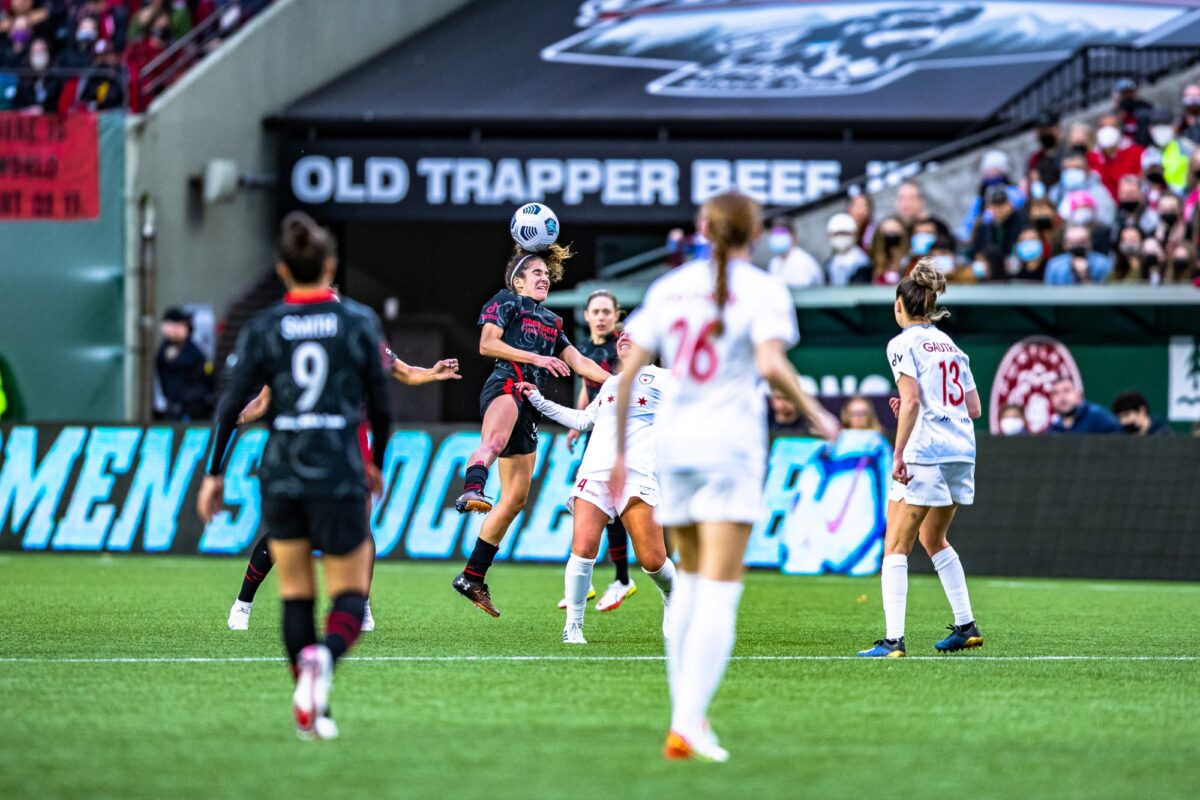
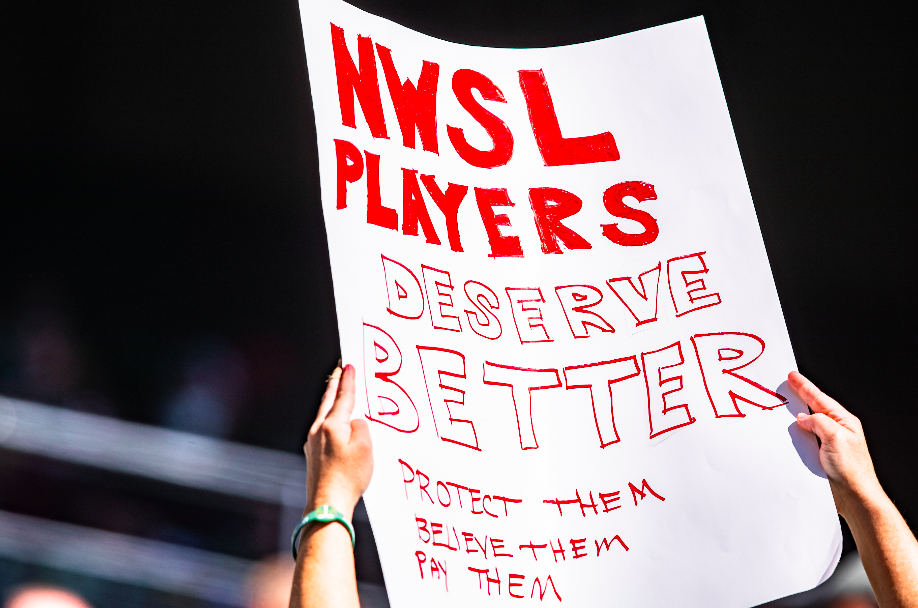
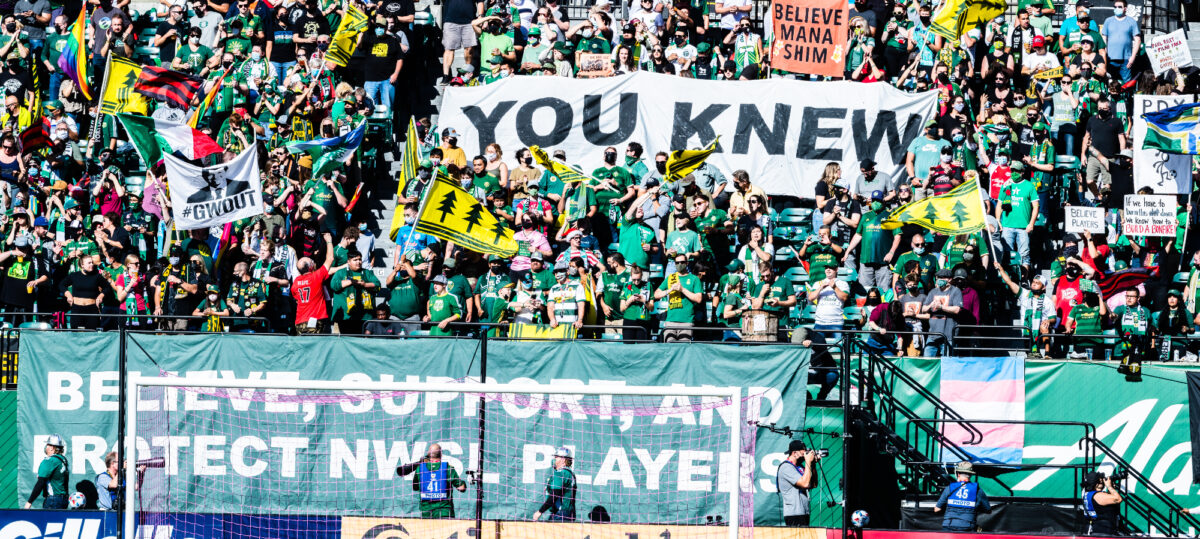
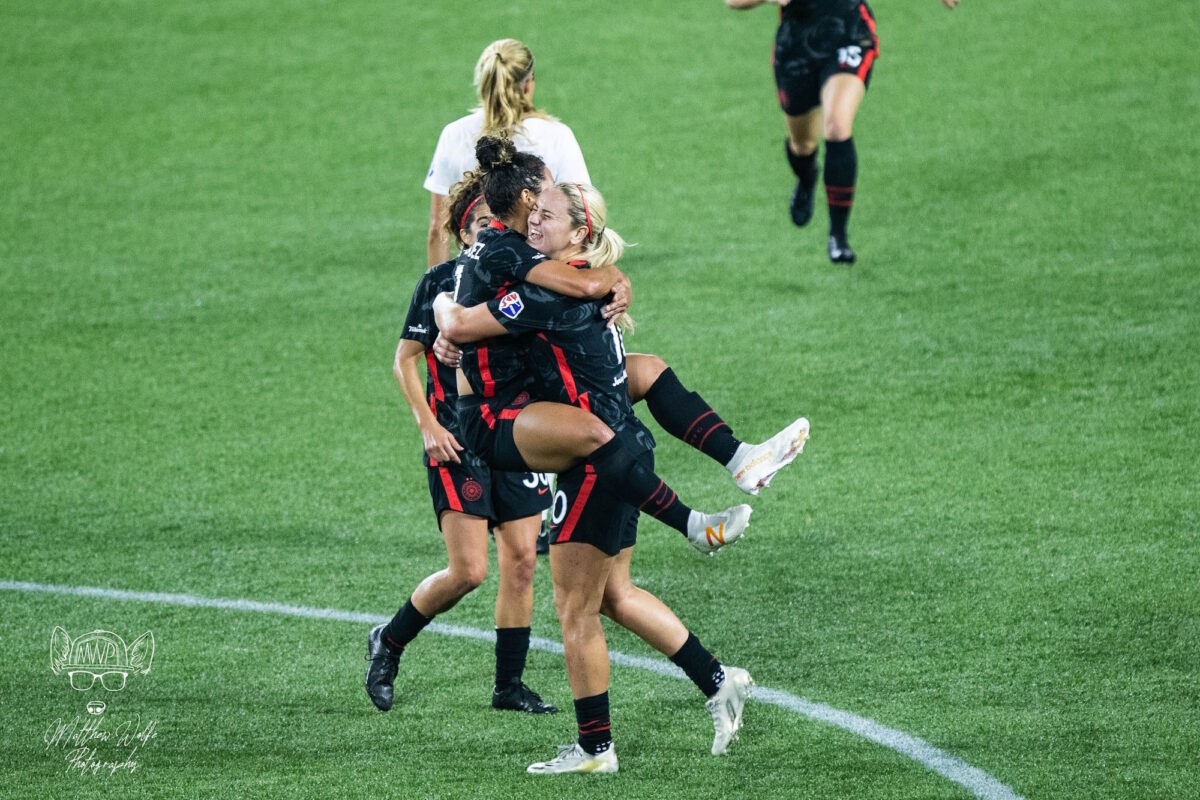
 Unlock with Patreon
Unlock with Patreon